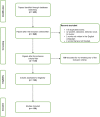Temporal and Spatiotemporal Arboviruses Forecasting by Machine Learning: A Systematic Review
- PMID: 35719644
- PMCID: PMC9204152
- DOI: 10.3389/fpubh.2022.900077
Temporal and Spatiotemporal Arboviruses Forecasting by Machine Learning: A Systematic Review
Abstract
Arboviruses are a group of diseases that are transmitted by an arthropod vector. Since they are part of the Neglected Tropical Diseases that pose several public health challenges for countries around the world. The arboviruses' dynamics are governed by a combination of climatic, environmental, and human mobility factors. Arboviruses prediction models can be a support tool for decision-making by public health agents. In this study, we propose a systematic literature review to identify arboviruses prediction models, as well as models for their transmitter vector dynamics. To carry out this review, we searched reputable scientific bases such as IEE Xplore, PubMed, Science Direct, Springer Link, and Scopus. We search for studies published between the years 2015 and 2020, using a search string. A total of 429 articles were returned, however, after filtering by exclusion and inclusion criteria, 139 were included. Through this systematic review, it was possible to identify the challenges present in the construction of arboviruses prediction models, as well as the existing gap in the construction of spatiotemporal models.
Keywords: Zika virus; arboviruses forecast; chikungunya; computational intelligence; dengue; digital epidemiology; machine learning; systematic review.
Copyright © 2022 Lima, da Silva, Moreno, Cordeiro da Silva, Musah, Aldosery, Dutra, Ambrizzi, Borges, Tunali, Basibuyuk, Yenigün, Massoni, Browning, Jones, Campos, Kostkova, Silva Filho and dos Santos.
Conflict of interest statement
The authors declare that the research was conducted in the absence of any commercial or financial relationships that could be construed as a potential conflict of interest.
Figures



References
-
- WHO. Ending the Neglect to Attain the Sustainable Development Goals: A Road Map for Neglected Tropical Diseases 2021-2030. (2021). Available online at: https://www.who.int/neglected_diseases/resources/who-ucn-ntd-2020.01/en/ (accessed April 6, 2021).
-
- Figueiredo R, Paiva C, Morato M. Arboviroses. Rio de Janeiro: Fundacao Oswaldo Cruz (2017). Available online at: http://www.canal.fiocruz.br/video/index.php?v=arboviroses1les1-1924
Publication types
MeSH terms
LinkOut - more resources
Full Text Sources
Miscellaneous

